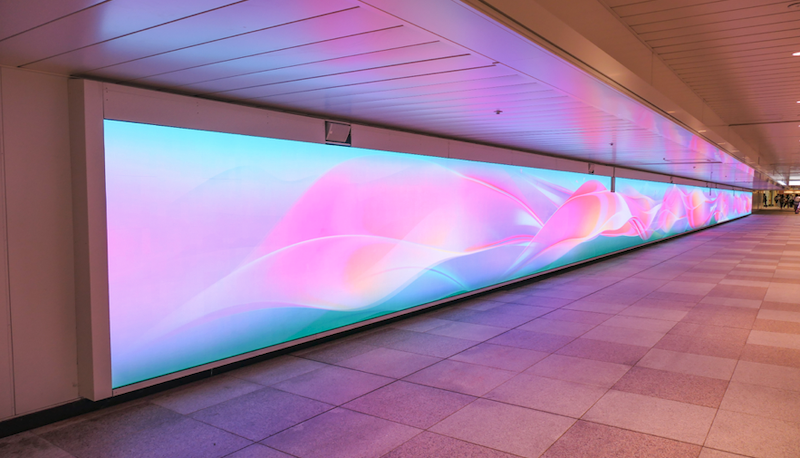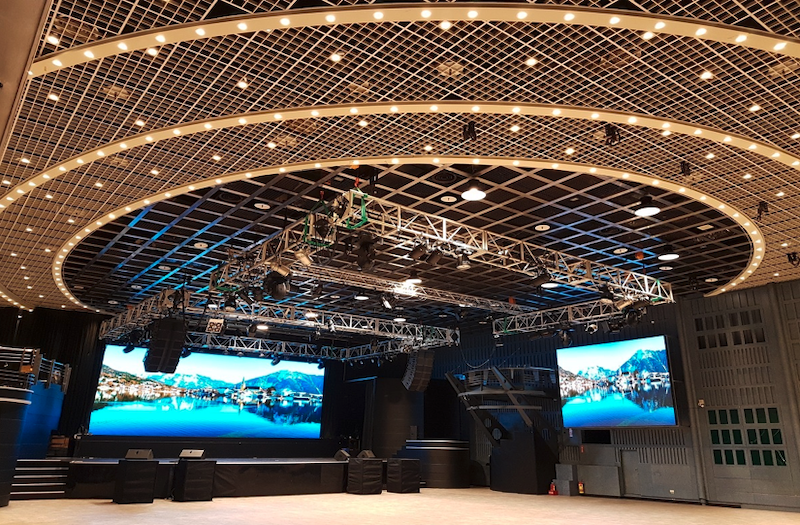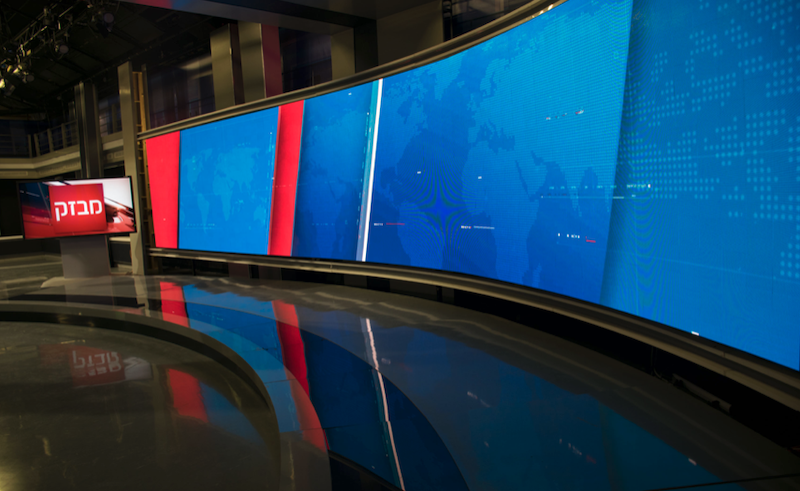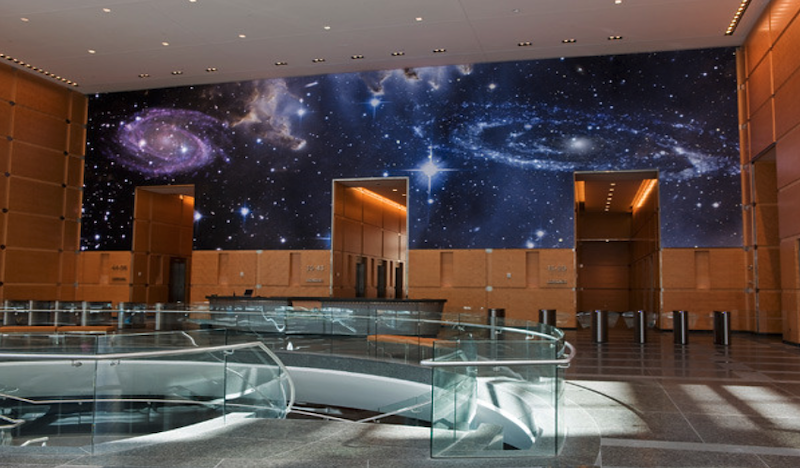
LED video walls are advanced display solutions that consist of Direct View LED displays, which work together to act as a single large screen.
These walls are gaining prominence across various sectors due to their ability to deliver vibrant, large-scale visuals with seamless integration.
Industries ranging from retail to entertainment are harnessing the dynamic capabilities of LED video walls to captivate audiences and enhance visual communication.
What Are the Latest Trends in LED Video Walls?
The landscape of LED video walls is continually evolving. Here are some of the key trends currently shaping this technology:
-
MicroLED Adoption: Smaller LEDs for a more detailed image
-
Increased Brightness and Color Accuracy: Enhancements for outdoor visibility and true-to-life colors
-
Smart Automation Features: Integration of AI for better content management
-
Sustainability Practices: Advances in energy-efficient designs
-
Interactive Capabilities: Touchscreen functionalities and audience engagement features

How Has Technology Evolved in LED Video Walls?
Recent technological advancements have significantly impacted the development and efficiency of LED video walls:
-
Reduction in Pixel Pitch: Allows for closer viewing distances without loss of detail
-
High Dynamic Range (HDR) Capabilities: Provides superior contrast and color range
-
Enhanced Brightness Levels: Ensures visibility in various lighting conditions
-
Better Refresh Rates: Minimizes motion blur and provides smoother transitions
What Are the Different Types of LED Video Walls Available Today?
LED video walls vary widely to suit different environments and applications:
Indoor LED Video Walls
Primarily used in environments protected from the elements, offering stunning visuals in controlled lighting.
Outdoor LED Video Walls
Built to withstand the elements, these are ideal for advertisements and public information displays.
Transparent LED Video Walls
These offer a see-through experience, which can transform glass facades into dynamic displays.
Curved LED Video Walls
Provide immersive visual experiences that are perfect for gaming and simulation environments.
Flexible LED Video Walls
These can be molded into various shapes, allowing for creative displays that fit unique spaces.
How Has Pixel Pitch Improvement Affected LED Video Walls?
Pixel pitch refers to the distance between the centers of two adjacent LEDs. A smaller pixel pitch means a higher pixel density, leading to:
-
Sharper Image Quality: Enhanced clarity at closer viewing distances
-
Greater Detail: Allows for more detailed visuals, crucial for high-definition content
-
Improved Viewer Engagement: Richer visual content increases viewer retention and interest
What Are the Advantages of LED Video Walls Compared to Other Display Technologies?

LED video walls offer several distinct advantages:
-
Seamless Design: No bezels as seen in multi-monitor setups, providing uninterrupted images
-
Superior Brightness and Visibility: Effective in various lighting conditions
-
Durability and Longevity: Robust against weather and frequent use
-
Energy Efficiency: Consumes less power compared to traditional displays
How Are LED Video Walls Being Used in Different Industries?
Retail and Advertising
Customer Engagement: Eye-catching displays that attract and hold customer attention
Brand Promotion: Dynamic content delivery that enhances brand recognition
Corporate and Conference Rooms
Enhanced Presentations: High-resolution displays make presentations more engaging
Efficient Communication: Facilitates interactive and visual communication across teams
Sports and Entertainment Venues
Live Feeds and Replays: Enhances the viewing experience with close-up actions and instant replays
Interactive Menus and Information: Provides real-time information to spectators
Education and Museums
Interactive Learning Tools: Facilitates dynamic educational experiences
Exhibit Enhancements: Augments the visitor experience with multimedia displays
Control Rooms and Security Centers
Improved Situational Awareness: Real-time data displays for quick decision-making
Enhanced Monitoring: Allows for multiple feeds on a single expansive screen
What Are the Latest Trends in LED Video Wall Content Management?
Content management systems (CMS) for LED video walls are evolving to be more:
-
User-friendly: Simplified interfaces for non-technical users
-
Flexible: Customizable features for varied content needs
-
Integrated: Seamlessly works with existing digital infrastructure
How Is AI Impacting LED Video Walls?

Artificial Intelligence is revolutionizing the management and functionality of LED video walls by:
-
Content Optimization: AI algorithms analyze viewer interactions to tailor content dynamically
-
Maintenance Predictions: AI predicts failures or maintenance needs to reduce downtime
-
Enhanced Interaction: AI-driven interfaces respond to user interactions in real-time
What Are the Most Important Factors to Consider When Choosing an LED Video Wall?
When selecting an LED video wall, consider the following key factors:
-
Size and Scalability: Ensure the wall fits the intended space and purpose
-
Resolution Requirements: Depending on viewing distance and content complexity
-
Installation Environment: Indoor versus outdoor applications
-
Budget Constraints: Initial costs versus long-term maintenance
What Are the Latest Innovations in LED Video Wall Installation and Maintenance?
Recent innovations focus on reducing the complexities and costs associated with LED video walls:
-
Front-Serviceable Panels: Allows easy access for maintenance and repairs
-
Auto-Calibration Features: Ensures color and brightness uniformity automatically
-
Modular Systems: Simplifies installation and disassembly processes
What Are the Common Challenges with LED Video Walls and How to Overcome Them?
Despite their advantages, LED video walls can present challenges:
-
High Initial Investment: Offset by long-term savings and ROI considerations
-
Complex Installation Requirements: Overcome by choosing modular designs and professional installation services
-
Technical Glitches: Mitigated by regular maintenance and choosing reliable hardware
What Are the Environmental Impacts of LED Video Walls?
LED video walls are becoming more environmentally friendly through:
-
Lower Energy Consumption: Newer models are far more energy-efficient
-
Recyclable Materials: Use of sustainable materials and recycling programs
-
Longevity: Durable construction reduces waste and replacement frequency
How Much Do LED Video Walls Cost?
What Are the Price Ranges for Different Types of LED Video Walls?
Cost varies widely based on type, size, and technology, typically ranging from moderate to high investment levels.
What Additional Costs Should Be Considered?
Installation, maintenance, and operational costs can affect the total cost of ownership.
What Are the Future Trends in LED Video Walls?
The future of LED video walls is likely to see continued advancements:
-
MicroLED Technology: Promises even smaller pixel pitches and higher resolution
-
8K Resolution: Enhanced clarity and detail for premium applications
-
Advanced AI Integration: Further improvements in content management and interactivity
Conclusion
Staying abreast of the latest trends in LED video wall technology is essential for maximizing their potential in various applications. From technical advancements to practical applications, LED video walls continue to redefine how we view and interact with digital content.
TrendForce 2024 Global LED Video Wall Market Outlook and Price Cost Analysis
Release Date: 28 September 2023
Language: Traditional Chinese / English
Format: PDF
Page: 273
|
If you would like to know more details , please contact:
|















